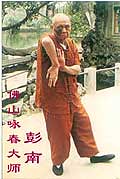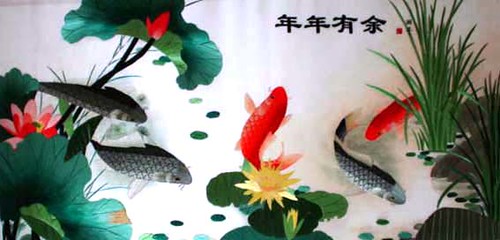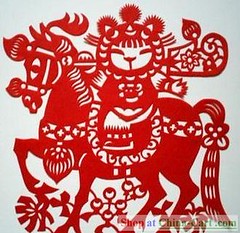| Home > Living in China > Kungfu |
Yongchun Quan
 |
| Master: Pengnan |
Yongchun Quan or the Yongchun Chuan is said to have been created by Yan Yongchun of Liancheng County in Fujian Province. It is said that during the reign of Emperor Jiaqing (1796-1820) of the Qing Dynasty, there was a Shaolin Chuan master Yan Si in Quanzhou of Fujian. To escape oppression, he left the city to take refuge with his family, and stayed in seclusion at Liancheng. Yan Si had a daughter called Yan Yongchun. She followed her father to practise martial arts since childhood and later became a Wushu master herself.
One day, when Yongchun was washing clothes at a riverside, she noticed a white crane fighting a green snake. She watched the fight carefully for a long time and came to understand their fighting rules. Thereafter, she combined the tangling and hissing of the crane and snake with the movements of the white crane Chuan and the southern-style Shaolin Chuan, forming the original Yongchun Chuan.
After Yan Yongchun married Liang Botao of Jiangxi Province, she taught her Chuan to her husband. They set up a Wushu club at Liancheng to teach the art. After the death of their father, Yan Yongchun and her husband traveled in Jiangxi before settling down in Guangdong Province, where they taught the Yongchun Chuan at Zhaoqing.
In the 20th year (1815) of the reign of Emperor Jiaqing during the Qing Dynasty, martial arts actor Huang Baohua went to perform at Zhaoqing and met Liang Botao. Liang taught Huang the Yongchun Chuan while Huang taught Liang cudgel plays. They both mastered the arts. In his later years, Huang Baohua passed the martial arts of the Yongchun Chuan and his cudgel plays to Liang Zan who, after mastering the arts, developed them into the present-day Yongchun Chuan. Meanwhile, the Yongchun Chuan became popularized through the efforts of other boxers who combined to improve and develop the art.
The Yongchun Chuan features: steady stances, generation of forces, three tricks with six forces, fists playing close to one's own body, usage of explosive power, stressing on real combat, focusing on completion of movements, combination of offence and defence by forcing up or crushing down the fists or feet from the opposing side. This style of Chuan emphasizes speed of play, keeping fists and feet close to one's body for better protection, as well as to prepare for attacks and fighting the opponent at close range. When fighting, Yongchun boxers contain their chest, arch the back, close their elbows and knees, draw in their ribs, keep their thighs closed to protect the groin. When they use their feet for attack, they must also use their hands in cooperation. When they kick they do not expose their groin and when they deliver fist blows, their hands do not leave the front of their body.
Art
 more
moreIntroduction to Suzhou Embroidery
Suzhou embroidery-one of China's four famous embrodiery styles, has a

Local Styles of Paper-cuts in China
Daisy Though making of paper-cut is simple, its

Origin and Development of
Chinese paper-cuts As one of the most popular folk

Customs
 more
more



 print
print  email
email  Favorite
Favorite  Transtlate
Transtlate 
